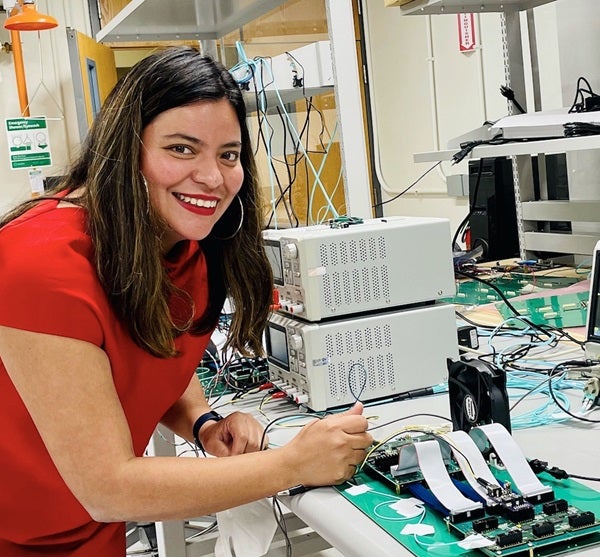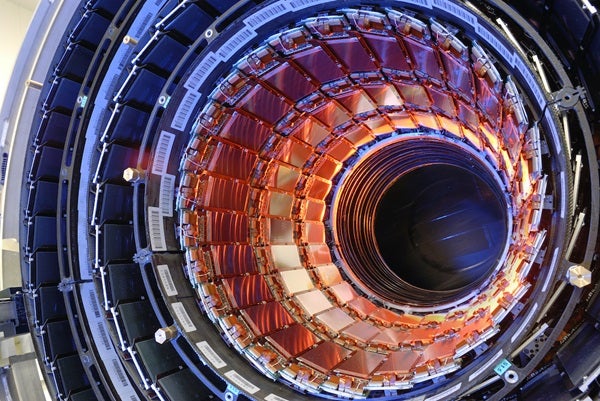In 2006, as an undergraduate, Indara Suarez spent time crawling around Crystal Ball, a cutting-edge particle physics experiment that’s part of the A2 Collaboration’s Detector System in Mainz, Germany. Carefully moving among bundles of wires and patiently tuning hundreds of photomultipliers, one after another, to ensure the spectrometer was ready, she realized she had finally found her calling.
When she was 12, Suarez moved with her family from Mexico to the U.S. At the time, she didn’t speak any English. She struggled through high school and enrolled at Pasadena City College, originally planning to become a math teacher. Driven by her interest in science, she applied for internships and summer research programs before deciding to apply to the University of California, Los Angeles, for a bachelor’s degree in physics. She then went on to attend the physics graduate program at Texas A&M University.
Suarez, now 38 and an experimental particle physicist at Boston University, is hunting for new fundamental particles. “We know so little of what makes [up] our universe,” says Suarez.
The Standard Model of particle physics — the current accepted theory that describes all known elementary particles and three of the four known fundamental forces — still cannot explain certain phenomena. For one, the model holds no clues to dark matter, the invisible mass that makes up 27 percent of the universe.
Suarez is at the heart of the search for new particles that could complete the Standard Model. She has been developing electronics and analysis techniques for the Large Hadron Collider’s Compact Muon Solenoid (CMS) experiment at CERN in Switzerland. The giant accelerator slams protons into each other at nearly the speed of light, and scientists catch the resulting event with the massive CMS detector in the hope of finding new particles.
“Detectors set limitations for testing new theories,” says Suarez. It is not enough to build a detector; one also needs to know its quirks and flaws. To that end, her group is developing machine-learning algorithms to prevent false positives and identify faulty equipment that could mimic the detection of dark matter candidate particles. She is also developing electronics for the next generation of precision timing detectors for the CMS. In 2021, Suarez received a Department of Energy Early Career Award, which will enable her group to pursue these projects.
When she’s not searching for new particles, Suarez is also dedicated to helping students from underrepresented backgrounds, ensuring that they can devote their time to research and develop a sense of belonging in physics.
Make sure to explore our full list of 25 rising stars in astronomy. Check back each week for a new profile!
To get the latest astronomical news and observing content delivered directly to your door, subscribe to Astronomy magazine today!











